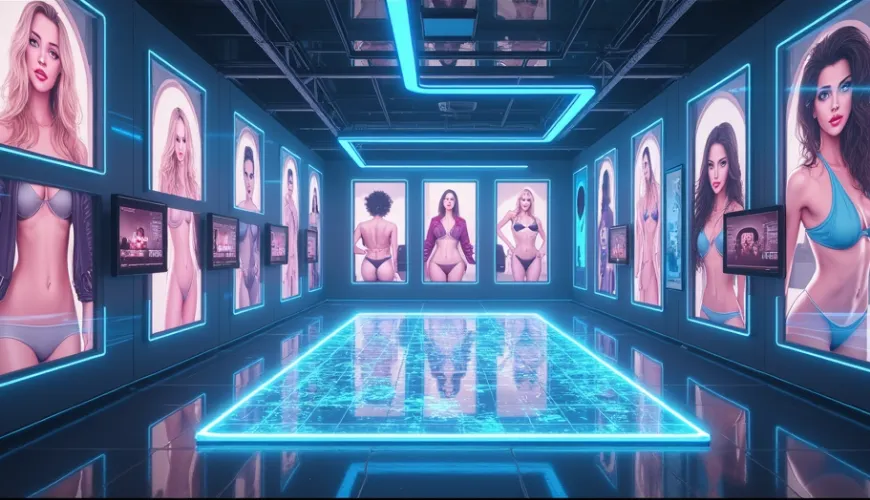Understanding NSFW AI Video Generators
In the rapidly evolving world of artificial intelligence, new applications are emerging at an astonishing pace. One of the more controversial yet widely discussed innovations is the NSFW AI video generator. These tools use advanced machine learning models to generate or modify videos containing adult or explicit content, often referred to as "Not Safe For Work” (NSFW) material.
While the technology behind these generators is rooted in legitimate advancements like generative adversarial networks (GANs) and deep learning, their use cases have sparked debates around ethics, privacy, and the future of content creation.
This article dives deep into what NSFW AI video generators are, how they function, the technology that powers them, and the broader implications they carry.
What Is an NSFW AI Video Generator?
An AI NSFW video generator is a software tool or platform that uses artificial intelligence to create or transform video content into adult-themed material. These systems are designed to either:
- Generate entirely new videos featuring synthetic characters or environments.
- Alter existing videos by inserting or replacing explicit content using AI-powered editing techniques.
The term "NSFW" is a broad label for content that may be inappropriate in professional or public settings, usually due to nudity, sexual themes, or graphic imagery.
These generators are often powered by deepfake technology, text-to-video models, or image synthesis engines that can piece together frames of video based on textual prompts or visual inputs.
How Does an AI NSFW Video Generator Work?
At the core of these generators is deep learning, a branch of machine learning that mimics the way humans learn certain types of information. To understand how they work, it helps to break down the process into stages:
Data Collection and Training
To create realistic NSFW videos, AI models are trained on massive datasets containing explicit content. These datasets include thousands — sometimes millions — of labeled images or video clips that help the model learn patterns in anatomy, lighting, motion, and expressions.
These datasets often raise ethical concerns, especially if the content is scraped without consent. Still, from a technical standpoint, they are essential for teaching the AI how to generate realistic outputs.
Model Architecture
Most NSFW video generators combine several advanced models, including GANs, which use a generator-discriminator pair to refine video realism through feedback; Transformers, adapted from language models to interpret sequences and context from text prompts; and Diffusion Models, known for image generation, now evolving to produce coherent video by transforming noise into animations.
Prompt-Based Generation
Some AI NSFW video generators operate through text commands. A user might enter a prompt like: "Create a 10-second video of a female character in a beach setting.” The AI then synthesizes a video that matches the description, often using pre-trained character models.
Other systems allow users to upload photos or reference footage, which the AI then uses to create personalized or altered videos.
Rendering and Post-Processing
Once the video is generated, the system goes through a rendering pipeline that polishes the frames, adds audio, adjusts lighting, and syncs movements. Post-processing can also include face-swapping, body morphing, or stylization effects.
This final step ensures the output looks as realistic as possible, especially when aiming for high-definition results.
Real-Life Applications and Use Cases
While the term NSFW often implies adult-only content, the underlying technology has broader applications. However, in the context of NSFW video generators, common use cases include:
- Adult entertainment: Companies in the adult industry are exploring AI-generated performers to reduce production costs and create personalized content.
- Sexual wellness tools: Some platforms are using AI to help users explore fantasies in a private, secure way.
- Roleplay and virtual companions: AI avatars or characters can interact with users in immersive environments, often powered by video and voice synthesis.
A real-world example would be a chatbot that uses AI-generated video responses to simulate intimacy or companionship. These tools often combine text, video, and audio AI to create a lifelike experience.
Ethical and Legal Concerns
Despite their impressive capabilities, NSFW AI video generators introduce significant ethical and legal complications. One of the most alarming concerns relates to the emergence of deepfake pornography, where a person's likeness is inserted into explicit videos without their consent. This kind of unauthorized manipulation not only intrudes on an individual's privacy but can lead to serious emotional distress and reputational damage for the victims.
Another pressing issue involves the way training data are sourced for these AI models. A large portion of these datasets are scraped from publicly accessible websites, often without explicit permission from the individuals involved. This brings up ongoing debates about digital rights and challenges conventional understandings of ownership over one's own image and online presence.
In response to these developments, several governments have begun exploring legal countermeasures. For instance, in the United States, a number of states have proposed or enacted laws targeting the dissemination of non-consensual deepfake content. These initiatives are part of a broader attempt to establish a legal framework for managing the rapidly evolving capabilities of AI-generated media.
Tech platforms also play a crucial role in curbing the spread of exploitative AI content. Recognizing their responsibility, major websites like Reddit and Twitter have updated their user policies to explicitly ban non-consensual deepfake pornography, aiming to reduce harm and uphold user safety on their services.
The Technology Behind the Scenes
To fully appreciate the innovation behind AI NSFW video generators, it's essential to examine the core technologies driving their development. Generative Adversarial Networks (GANs), first introduced in 2014 by Ian Goodfellow, revolutionized digital media by using two neural networks in competition to refine and produce ultra-realistic images and videos. This adversarial arrangement enables the model to improve through iterative learning, making it a powerful tool for creating lifelike visual content.
Diffusion models, which gained popularity in AI image generators such as DALL·E and Midjourney, have been adapted for video generation by starting from randomness and methodically converting it into coherent scenes; when expanded to video, these models craft motion frame by frame. Another crucial advancement comes from text-to-video transformers, which comprehend user-written prompts and translate them into dynamic video sequences—a space where startups like RunwayML and Pika Labs are pioneering safe-for-work innovations.
The Rise of Responsible AI Use
As artificial intelligence (AI) advances, the imperative for responsible usage becomes increasingly critical. Developers and users share the responsibility of fostering ethical interactions with these technologies. One crucial aspect is transparency—clearly labeling AI-generated content is essential to prevent misleading or deceiving audiences.
Equally important is the issue of consent. Individuals featured in AI-generated media must have given their permission, safeguarding personal rights and maintaining trust in AI systems. Ensuring subjects in AI content agree to their likeness or data usage establishes a foundation of ethical accountability.
In addition to transparency and consent, safety tools play a pivotal role in responsible AI deployment. Implementing filters or moderation systems can help prevent the misuse of AI technologies, particularly in areas prone to abuse or harm. These tools not only protect users but also help developers align their applications with social and legal norms.
Organizations such as OpenAI and MIT consistently highlight the importance of ethical AI development. Their focus is particularly strong in sensitive domains, such as adult content creation, where misuse may carry significant consequences. Industry leaders advocate for strict standards to protect individuals and uphold integrity in the growing AI landscape.
Future of NSFW AI Video Generators
NSFW video generators are set to become increasingly advanced, featuring enhanced realism, 4K-quality outputs, real-time generation, and integration with VR for immersive experiences. While these tools offer new possibilities for entertainment, self-expression, and virtual relationships, growing demand for personalized digital content is accompanied by increased regulation to prevent misuse and protect individuals.



